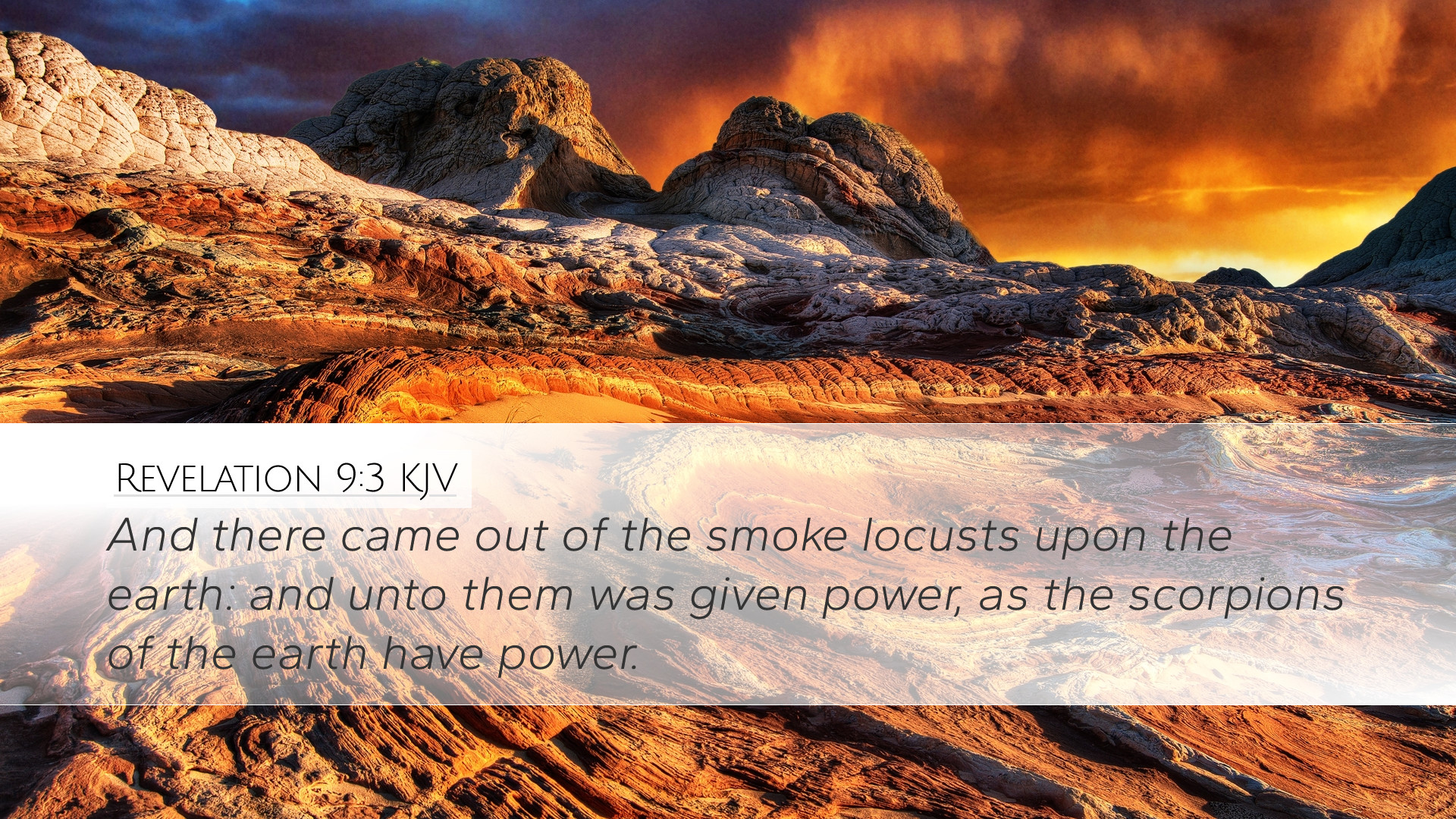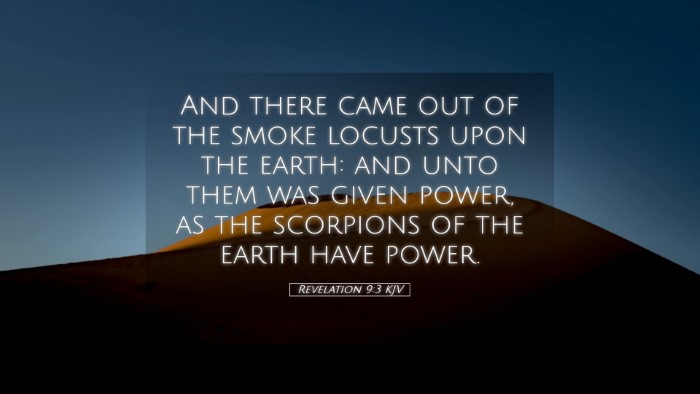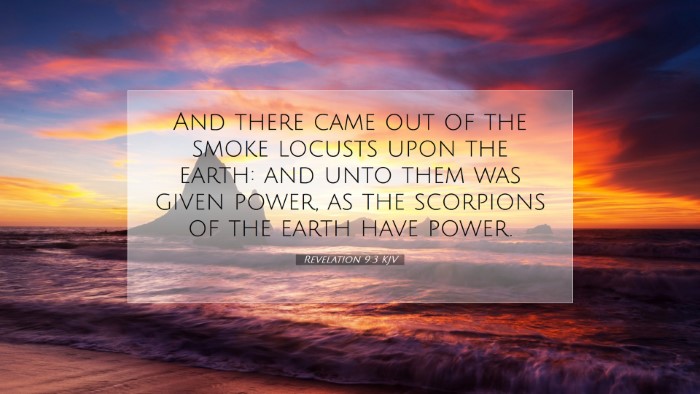Commentary on Revelation 9:3
Revelation 9:3 states, "And out of the smoke locusts came down upon the earth, and unto them was given power, as the scorpions of the earth have power." This verse describes a vivid image of locusts emerging from smoke, symbolizing a great calamity unleashed upon the earth.
Contextual Overview
This passage occurs during the sounding of the fifth trumpet and is part of a series of judgments that befall the earth. The events depicted convey the intensity and severity of God's judgment and serve as a warning to humanity. The smoke represents darkness, and the locusts symbolize a demonic army unleashed against those who have rejected God.
Interpretations of the Locusts
-
Symbolic Representation:
Matthew Henry mentions the idea that the locusts are symbolic of destructive forces unleashed by God. The characteristics of the locusts suggest a parallel between the judgment upon the earth and spiritual forces that torment humanity.
-
Demonic Entities:
Albert Barnes provides insight that the locusts may represent demonic forces. He emphasizes that their power is akin to that of scorpions, highlighting the idea that their sting inflicts pain and suffering on those without God's seal.
-
Historical Context:
Adam Clarke suggests that these locusts can be linked to specific historical events. He argues that they may represent political powers or military invasions that bring devastation similar to a plague of locusts sweeping through a land.
Theological Implications
This verse raises important theological questions regarding suffering, judgment, and the nature of evil. The locusts signify not merely physical destruction but also spiritual consequences. The torment they inflict reflects God’s tolerance of evil versus His ultimate judgment.
Judgment and Mercy
Matthew Henry highlights God's patience, suggesting that while the judgment is severe, it is also an opportunity for repentance. This reinforces the relationship between divine justice and mercy—God desires that none should perish but that all should come to repentance.
Spiritual Warfare
Albert Barnes notes that this passage illustrates the reality of spiritual warfare. The characteristics of the locusts depict the chaos and torment that occur when individuals remove themselves from God’s protection, emphasizing the need for vigilance in the believer's life.
Application for Today
For pastors, students, and theologians, Revelation 9:3 serves as a poignant reminder of the realities of sin, judgment, and the need for spiritual awakening. The imagery encourages an examination of personal and communal faithfulness to God amid trials and tribulations.
-
Call to Repentance:
This verse prompts a call to repentance for both individuals and the church. Reflecting on how one might be distant from God is essential, paralleling the significance of the locusts as judgment delivered with intent toward restoration.
-
Awareness of Temptation:
Recognizing the forces that seek to derail faith is crucial. Just as the locusts symbolize a threat, believers today must guard against spiritual complacency and actively pursue godliness.
-
Embrace of God’s Protection:
As emphasized in the discussion of divine judgment, believers are encouraged to seek refuge in God through prayer, fellowship, and the study of scripture, understanding God’s desire to sanctify and protect His people.
Conclusion
Revelation 9:3 encapsulates powerful themes of judgment, the reality of spiritual opposition, and the overarching need for divine mercy. By exploring the insights of Matthew Henry, Albert Barnes, and Adam Clarke, we glean a deeper understanding of the text's implications. This passage serves as a reminder for believers to remain steadfast in their faith, recognizing the times of trial as opportunities for growth and deeper communion with God.


